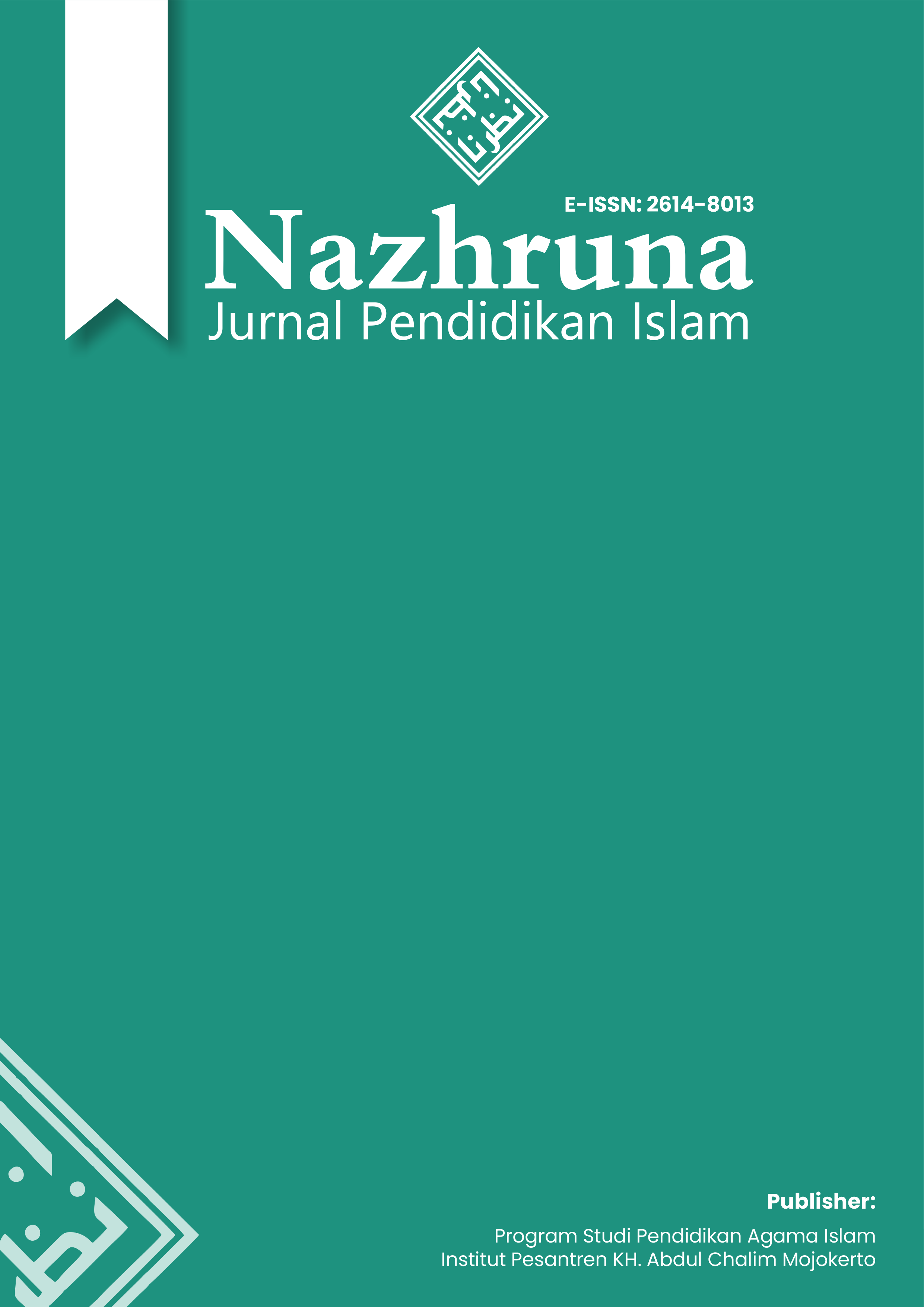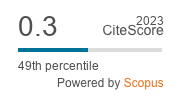Arabic Grammar in Minangkabau Surau: Philological Perspectives on Traditional Islamic Education
DOI:
https://doi.org/10.31538/nzh.v8i3.210Keywords:
Nahwu, Surau, Arabic Manuscripts, MinangkabauAbstract
This study aims to uncover the reasons why Nahwu manuscripts are found in almost every surau in Minangkabau and how Nahwu, a branch of Arabic grammar, was taught in these traditional Islamic educational institutions. This research is qualitative research employing a philological approach, which seeks to describe and reveal the phenomena surrounding surau education in Minangkabau. Based on the discovery of Nahwu manuscripts, and to explore the instructional process of Nahwu in these institutions. Primary data sources include several Nahwu manuscripts, along with the leaders of Inyik Jaho Surau, Surau Labai Sati Malalo, and the SurauSyaikh Abbas Padang Japang. Secondary data sources comprise various books, articles, and other related references. The research finds that the Nahwu manuscripts discovered in these surau represent the most authentic evidence of Islamic educational traditions in historical Minangkabau. Nahwu was not only considered essential for understanding religious texts but also regarded as an integral part of religious life. Instruction was delivered through the sorogan method, whereby teachers would recite and guide the memorization of Nahwu texts, translate them, and apply them to the study of other religious books. Nahwu material was taught progressively in three levels: elementary, intermediate, and advanced, each with its respective classical texts.
Downloads
References
Adam, K., Al-Maadeed, S., & Akbari, Y. (2022). Hierarchical Fusion Using Subsets of Multi-Features for Historical Arabic Manuscript Dating. Journal of Imaging, 8(3), 60. https://doi.org/10.3390/jimaging8030060
Afdayeni, M. (2017). Dinamika Sistem Pendidikan Islam (Surau) Minangkabau Pra dan Pasca Pembaharuan. Fuaduna: Jurnal Kajian Keagamaan dan Kemasyarakatn, 1(1), 58–69. http://dx.doi.org/10.30983/fuaduna.v1i1.442
Al-Barhamtoshy, H. M., Jambi, K. M., Rashwan, M. A., & Abdou, S. M. (2023). An Arabic Manuscript Regions Detection, Recognition and Its Applications for OCRing. ACM Transactions on Asian and Low-Resource Language Information Processing, 22(1), 1–28. https://doi.org/10.1145/3532609
Alfurqan, A., Tamrin, M., Hidayat, A. T., & Syaputri, W. (2025). Harmony and divergence: Unraveling the influence of Surau in Minangkabau religious landscape. Cogent Arts & Humanities, 12(1), 2510057.
Alghamdi, A., Alluhaybi, D., Almehmadi, D., Alameer, K., Siddeq, S. B., & Alsubait, T. (2021). Text Segmentation of Historical Arabic Handwritten Manuscripts Using Projection Profile. 2021 National Computing Colleges Conference (NCCC), 1–6. https://doi.org/10.1109/NCCC49330.2021.9428836
Al-homed, L. S., Jambi, K. M., & Al-Barhamtoshy, H. M. (2022). A Novel Dataset for Known and Unknown Ancient Arabic Manuscripts. 2022 20th International Conference on Language Engineering (ESOLEC), 60–65. https://doi.org/10.1109/ESOLEC54569.2022.10009168
Al-homed, L. S., Jambi, K. M., & Al-Barhamtoshy, H. M. (2023). A Deep Learning Approach for Arabic Manuscripts Classification. Sensors, 23(19), 8133. https://doi.org/10.3390/s23198133
Amri, F. F., Amin, I., & Gamasari, R. (2024). Maojok: Akulturasi Ilmu Gramatika Arab di Minangkabau (Studi Kasus Pondok Pesantren Nurul Yaqin, Ringan-Ringan). Al-Ma’any: Jurnal Studi Bahasa dan Sastra Arab, 3(1), 1–10. https://doi.org/10.56874/almaany.v3i1.1863
Azra, A. (2003). Surau Pendidikan Islam Tradisional dalam Transisi dan Modernisasi (I. Thaha, Ed.; Pertama). PT Logos Wacana Ilmu.
Burhanuddin, & Saidah, M. (2024). Peran Bahasa Arab Terhadap Alhadis dalam Dakwah Islam: Tafsir dan Interpretasi. Jurnal Review Pendidikan dan Pengajaran, 7(4), 14270–14279. https://doi.org/10.31004/jrpp.v7i4.35514
Contadini, A. (2022). Intertextual Animals: Illustrated Kalīla wa-Dimna Manuscripts in Context. Dalam E. Brac De La Perrière, A. El Khiari, & A. Vernay-Nouri (Ed.), Les périples de Kalila et Dimna: Quand les fables voyagent dans la littérature et les arts du monde islamique (hlm. 95–129). BRILL. https://doi.org/10.1163/9789004498143_005
Fransisca, T. (2015). Konsep I’rab dalam Ilmu Nahwu (Sebuah Kajian Epistemologis). Al Mahāra: Jurnal Pendidikan Bahasa Arab, 1(1), 79–100. https://doi.org/10.14421/almahara.2015.011-04
Garcia Probert, M. A., & Sijpesteijn, P. M. (2022). Amulets and Talismans of the Middle East and North Africa in Context: Transmission, Efficacy and Collections. BRILL. https://doi.org/10.1163/9789004471481
Hanif, A., & Rudiamon, S. (2022). Textological-Philological Study on Arabic Language Sciences in Minangkabau Manuscripts. AJIS: Academic Journal of Islamic Studies, 7(1), 75–92. https://doi.org/10.29240/ajis.v7i1.4322
Hanif, A., Syamsuwir, & Eliwatis. (2018). Menelisik Naskah Minangkabau yang Tercecer: Studi Filologi Terhadap Naskah-naskah Keagamaan di Sumatera Barat.
Hasibuan, Z. E. (2016). The Portrait of Surau as a Forerunner of Madrasah: The Dynamics of Islamic Institutions in Minangkabau Toward Modernization. AJIS: Academic Journal of Islamic Studies, 1(1), 1-28.
Hudawi, A., Octavia, N., Elfandiono, A., Bayu Setiawan, A., Abdul Ghafur, A., & Eko Susanto, A. (2021). Klasifikasi Pemahaman Santri dalam Pembelajaran Kitab Kuning Menggunakan Algoritma C4.5. Analisis Pohon Keputusan (Decision Tree) di Pesantren. TRILOGI: Jurnal Ilmu Teknologi, Kesehatan, dan Humaniora, 2(3), 266–269. https://doi.org/10.33650/trilogi.v2i3.2840
Ihwan, M. B., Mawardi, S., & Ni’mah, U. (2022). Pengaruh Penguasaan Ilmu Nahwu dan Sharaf Terhadap Kemampuan Membaca Kitab Fathul Qarib. TADRIS AL-ARABIYAT: Jurnal Kajian Ilmu Pendidikan Bahasa Arab, 2(1), 61–77. https://doi.org/10.30739/arabiyat.v2i1.1422
Kharles, & Nazmi, R. (2015). Perubahan Pola Pendidikan Islam di Sumatera Barat (Minangkabau) dari Surau Ke Lembaga Pondok Pesantren Semenjak Awal Abad 20. ASEAN Comparative Education Research Network Conference, 2349–2361.
MAE (Kunstkamera), RAS, & Kudriavtceva, A. (2023). Ex Ipso Fonte: The Cataloguing of Arabic Manuscript in the Scientific Library of St. Petersburg State University. Manuscripta Orientalia. International Journal for Oriental Manuscript Research, 29(2), 89–95. https://doi.org/10.31250/1238-5018-2023-29-2-89-95
Maouloud, S. A., & Ba, C. (2024). New Transformer Approach to the Recognition of Mediaeval Arabic Historical Manuscripts. Dalam Y. M. Elhadj, M. F. Nanne, A. Koubaa, F. Meziane, & M. Deriche (Ed.), Artificial Intelligence and Its Practical Applications in the Digital Economy (Vol. 862, hlm. 271–283). Springer Nature Switzerland. https://doi.org/10.1007/978-3-031-71429-0_20
Mayuasti, & Prahara, S. (2022). The Protection and Preservation of Minangkabau Traditional Knowledge in Muatan Lokal Curriculum of West Sumatera. Ensiklopedia of Journal, 4(2), 295–298. https://doi.org/10.33559/eoj.v4i3.428
Murtafiah, N. H. (2021). Efektivitas Penerapan Metode Sorogan Kitab Al Jurumiyah dalam Menigkatkan Kemampuan Membaca Kitab Kuning. An Nida, 1(1), 18–25.
Nurhayati, F. (2020). Pembelajaran Ilmu Nahwu dengan Metode Qurani. Al-Urwatul Wutsqo: Jurnal Keislaman dan Pendidikan, 1(1), 1–4.
Pramono. (2018). Khazanah Naskah Minangkabau (Pramono, Ed.; Pertama). CV. Rumahkayu Pustaka Utama.
Pramono, Yusuf, M., & Hidayat, H. N. (2018). Bahasa Melayu dan Minangkabau dalam Khazanah Naskah Minangkabau. Jurnal Pustaka Budaya, 5(2), 24–35. https://doi.org/10.31849/pb.v5i2.1483
Rasyid, H., Saepudin, A., & Asikin, I. (2024). Corak Tradisi Kitab Klasik di Pesantren Tradisional dan Modern di Tasikmalaya. Ta’dib : Jurnal Pendidikan Islam, 13(1), 77–86. https://doi.org/10.29313/tjpi.v13i1.13589
Susena, D., Pramono, & Hidayat, H. N. (2013). Pengobatan Tradisional dalam Naskah-naskah Minangkabau Inventarisasi Naskah, Teks, dan Analisis Etnomedisin. WACANA ETNIK: Jurnal Ilmu Sosial dan Humaniora, 4(2), 133–152. http://dx.doi.org/10.25077/we.v4.i2.53
Vernay-Nouri, A. (2022). Histoires de transmissions: Un manuscrit arabe du XIIIe siècle et ses copies tardives. Dalam E. Brac De La Perrière, A. El Khiari, & A. Vernay-Nouri (Ed.), Les périples de Kalila et Dimna: Quand les fables voyagent dans la littérature et les arts du monde islamique (hlm. 130–171). BRILL. https://doi.org/10.1163/9789004498143_006
Zafar, A., & Iqbal, A. (2022). Application of soft computing techniques in machine reading of Quranic Kufic manuscripts. Journal of King Saud University - Computer and Information Sciences, 34(6), 3062–3069. https://doi.org/10.1016/j.jksuci.2020.04.017
Zen, H. M. (2023). The Protection and Preservation of Minangkabau Traditional Knowledge in Muatan Lokal Curriculum of West Sumatera. Foramadiahi: Jurnal Pendidikan dan Keislaman, Volume: 15(02), 12.
Zulman, H., & Samad, D. (2024). Surau and Modernization of Early 20th Century Islamic Education Case of Western Sumatra (Minangkabau). Journal of Multidisciplinary Inquiry in Science, Technology and Educational Research, 1(3c), 1367-1376.
Zubaidillah, M. H. (2018). Pengantar Ilmu Nahwu Belajar Bahasa Arab Sampai Bisa. Amuntai: Hemat. https://doi.org/10.31219/osf.io/gm5e7
Downloads
Published
How to Cite
Issue
Section
License
Copyright (c) 2025 Akhyar Hanif, Septika Rudiamon, Muhammad Fauzinudin Faiz, Cut Afrina, Arifki BudiaWarman, Elvi Rahmi

This work is licensed under a Creative Commons Attribution-ShareAlike 4.0 International License.








